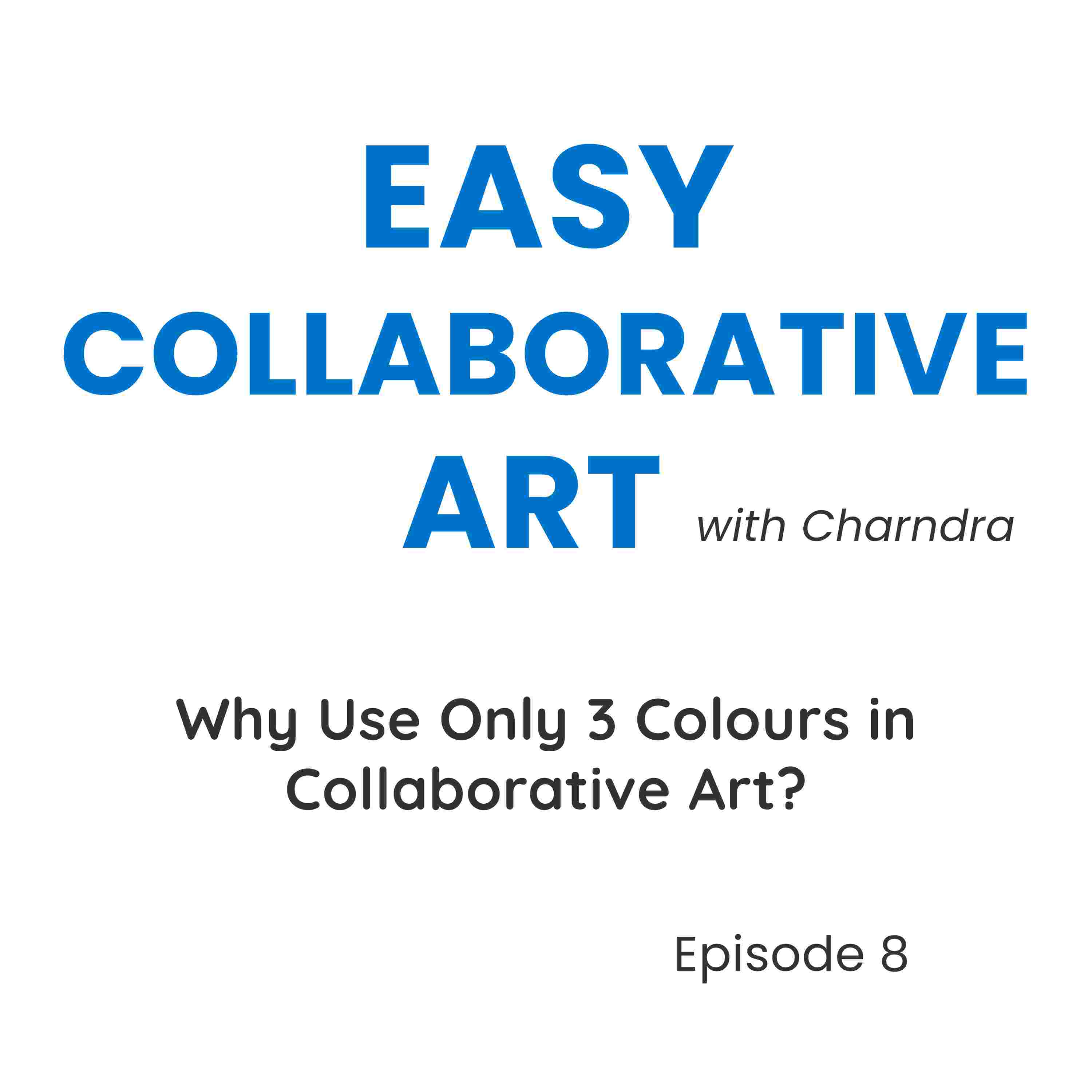

Why Use Only 3 Colours in Collaborative Art?
- to SIMPLIFY your group painting with a limited colour scheme!
In this episode 8 of Easy Collaborative Art, I talk about the benefits of using a limited colour scheme in collaborative art. You’ll discover how working with just three colours can make painting easier, more enjoyable, and still visually cohesive. By reducing decision fatigue and keeping supplies simple, your painters can focus on creativity rather than overthinking colour choices.
I share practical strategies for selecting and layering three colours, mixing subtle variations, and using white to brighten layers and still produce rich, vibrant, and unique collaborative artworks. Check out many examples using just a cool or warm colour scheme in my free guide, available through the links below.
What you’ll discover in this episode:
Links and Resources:
🎨 Read the full episode transcript: Episode 8: Why Use Only 3 Colours in Collaborative Art?
📘 Grab your free Beginner’s Guide to Collaborative Art
🎧 Podcast Home: Easy Collaborative Art
Happy Painting!
Charndra
Your Inclusive Social Art Guide
Below is a quick ‘How to Start’ guide for running easy collaborative art projects with families, homeschool groups, or a casual small groups of friends, or simply: How to Start a Simple Collaborative Art Project at Home!
Imagine you’re a parent, friend, or volunteer guiding a small group of children or a group of mixed ages through a fun, beginner-friendly group art project at home or in a casual setting. Here’s an easy process to follow:
Step 1: Messy Playing
Start with freedom and fun. Use medium or large brushes for this first expressive layer. Invite everyone to cover the surface - a large sheet of sturdy paper, or a canvas - with circles, spirals, dots, and clusters of simple marks. Keep the paints to two or three harmonious colours for an easy, visually appealing result. This stage helps everyone relax and experience what collaborative art is: creating together rather than individually.
Step 2: Exploring
Once the base layer has dried, invite participants to add patterns and clusters of shapes. These can flow from the edges, follow lines, or gather around earlier marks. Use Pattern Play resources to spark ideas, then let everyone find their own creativity. Repeating,layering, and varying the size of patterns helps create flow and unity.
Facilitator tip: Provide one brush size per layer and switch to smaller brushes as you go. This builds depth and sophistication without overwhelming with too many choices.
Step 3: Bling!
Add finishing touches with paint pens, doodles, and small highlights. Clusters of dots, stick-on gems, or dot stickers can add sparkle and tie the artwork together. This final stage ensures everyone feels proud of their contribution.
This process makes it simple for parents orcasual group leaders to run fun, beginner-friendly collaborative art projects.
It’s playful, inclusive, and a creative way to connect children and adults through shared artmaking.